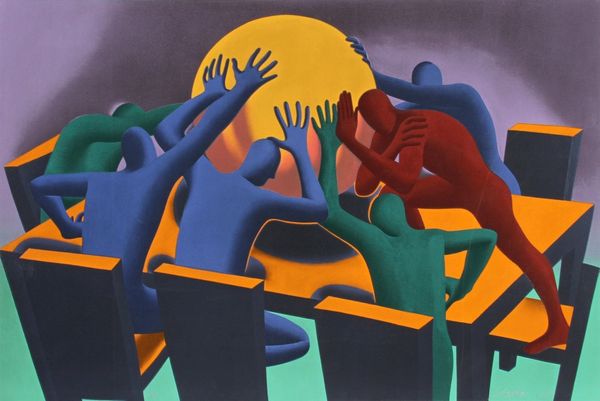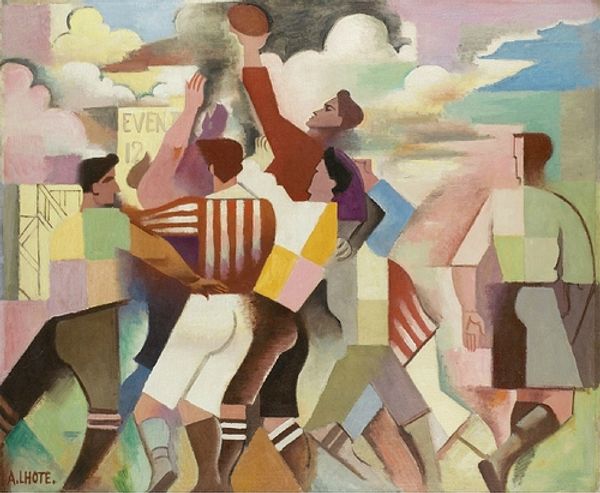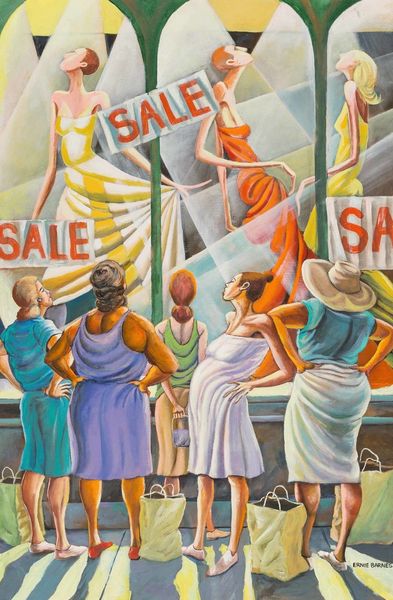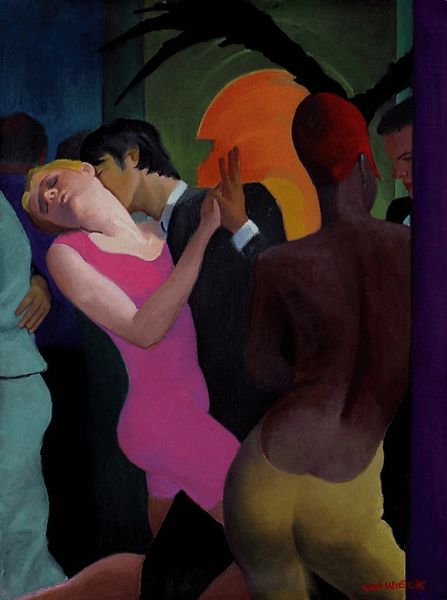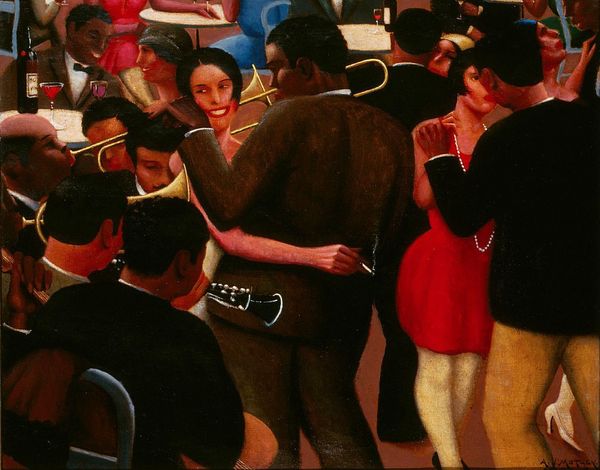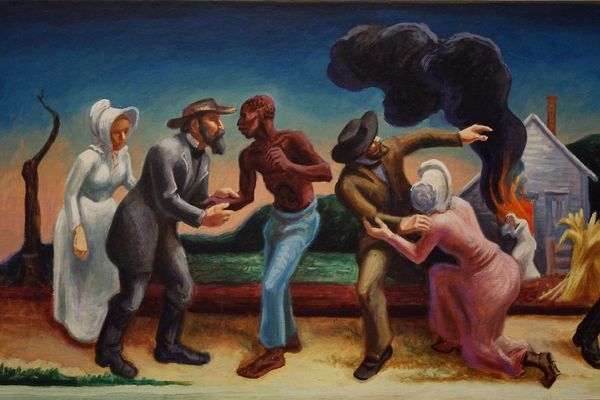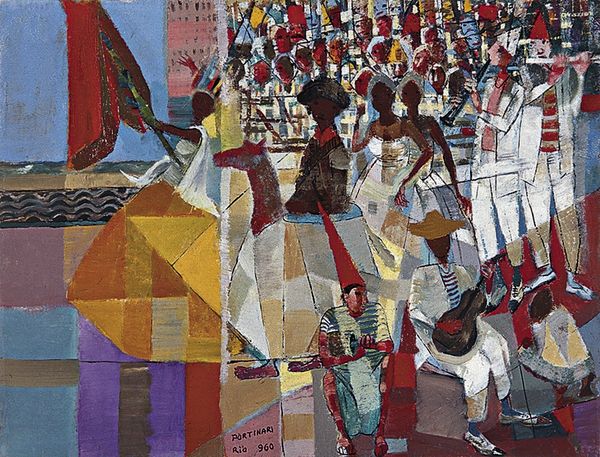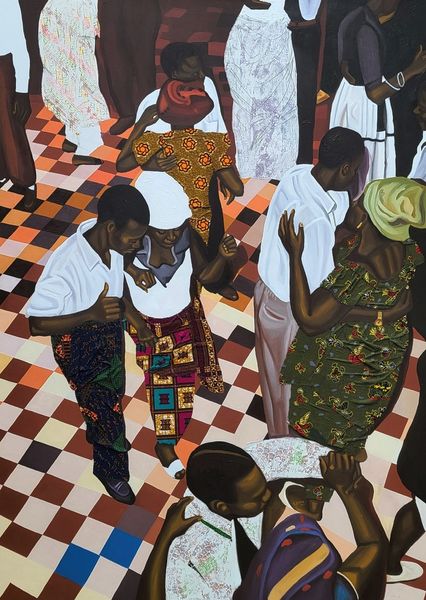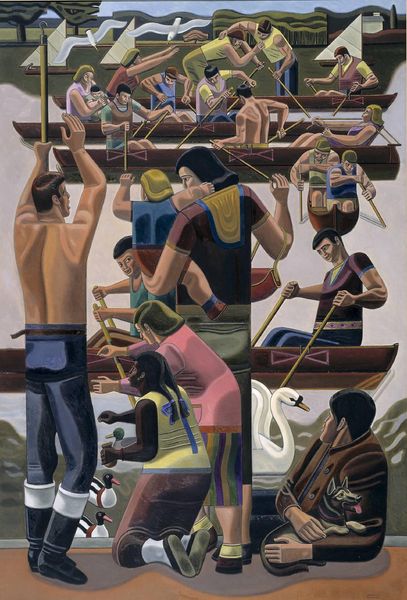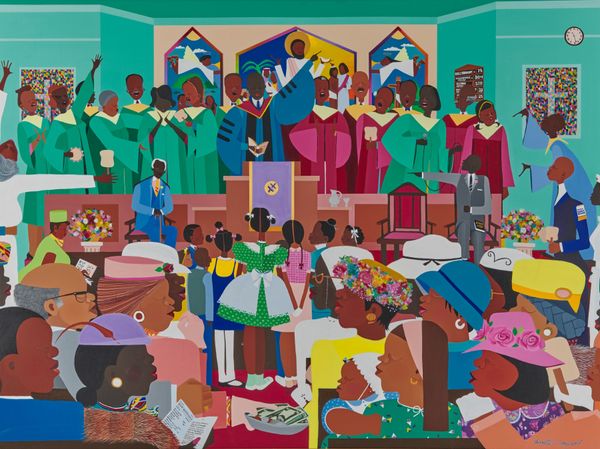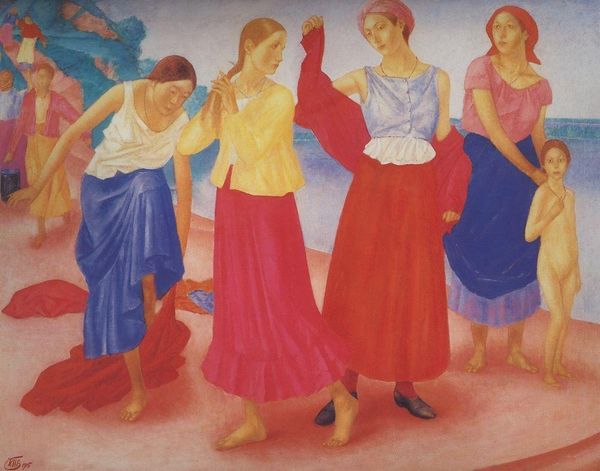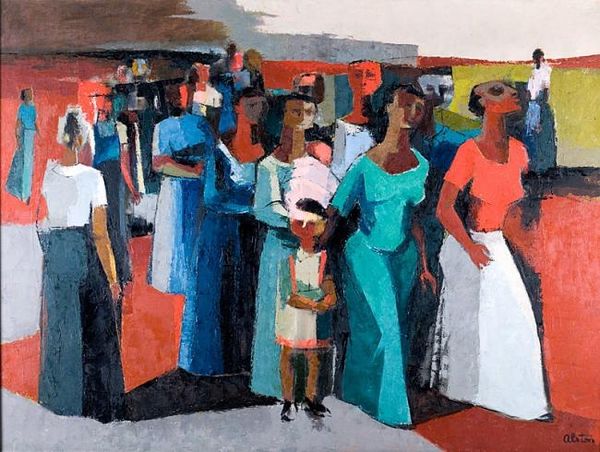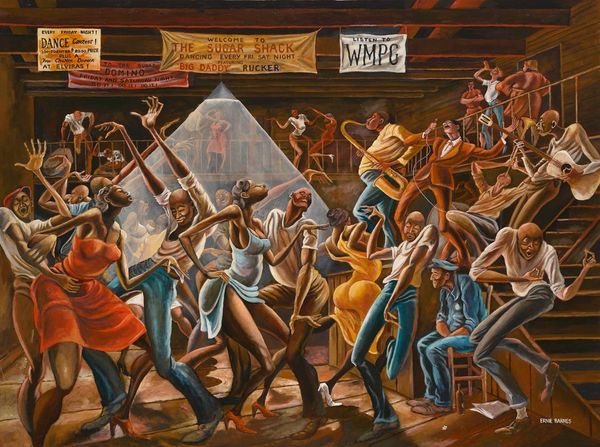
Dimensions: support: 1432 x 1594 mm
Copyright: © Tate | CC-BY-NC-ND 4.0 DEED, Photo: Tate
Editor: William Roberts' "Playground (The Gutter)" is quite striking. The blocky figures seem almost manufactured. What do you see in the ways the materials and production influence its meaning? Curator: The focus on labor and materiality is key. Roberts, influenced by Vorticism, presents figures as almost mechanized, reflecting the industrialization impacting society. Consider the paint application; it's deliberately flat, minimizing the artist's hand and emphasizing the mass production aesthetic. Editor: So, it's less about individual skill and more about a commentary on the changing means of production? Curator: Precisely. The "gutter" setting itself becomes a site of labor, a space shaped by social context and even consumption, as these children engage in their own forms of production and play. Editor: I hadn't thought of it that way. It makes the painting feel much more critical of its time.
Comments
tate 8 months ago
⋮
http://www.tate.org.uk/art/artworks/roberts-playground-the-gutter-t02346
Join the conversation
Join millions of artists and users on Artera today and experience the ultimate creative platform.
tate 8 months ago
⋮
'Playground (The Gutter)' was originally the left section of a larger picture titled 'The Gutter'. The right part, 'Skipping (The Gutter)' is displayed alongside. The canvas was divided into two after the Second World War and a strip of canvas a foot wide removed from the centre. Photographs reveal the removed image as three boys playing with tops and whips. Roberts said that he painted 'The Gutter' because he had heard that artists were being commissioned to paint pictures for a new Cunard or P & O liner. The picture was painted at Haverstock Hill, NW3, which Roberts left in 1935, and signed and incorrectly dated 1936 when later divided. Gallery label, August 2004

